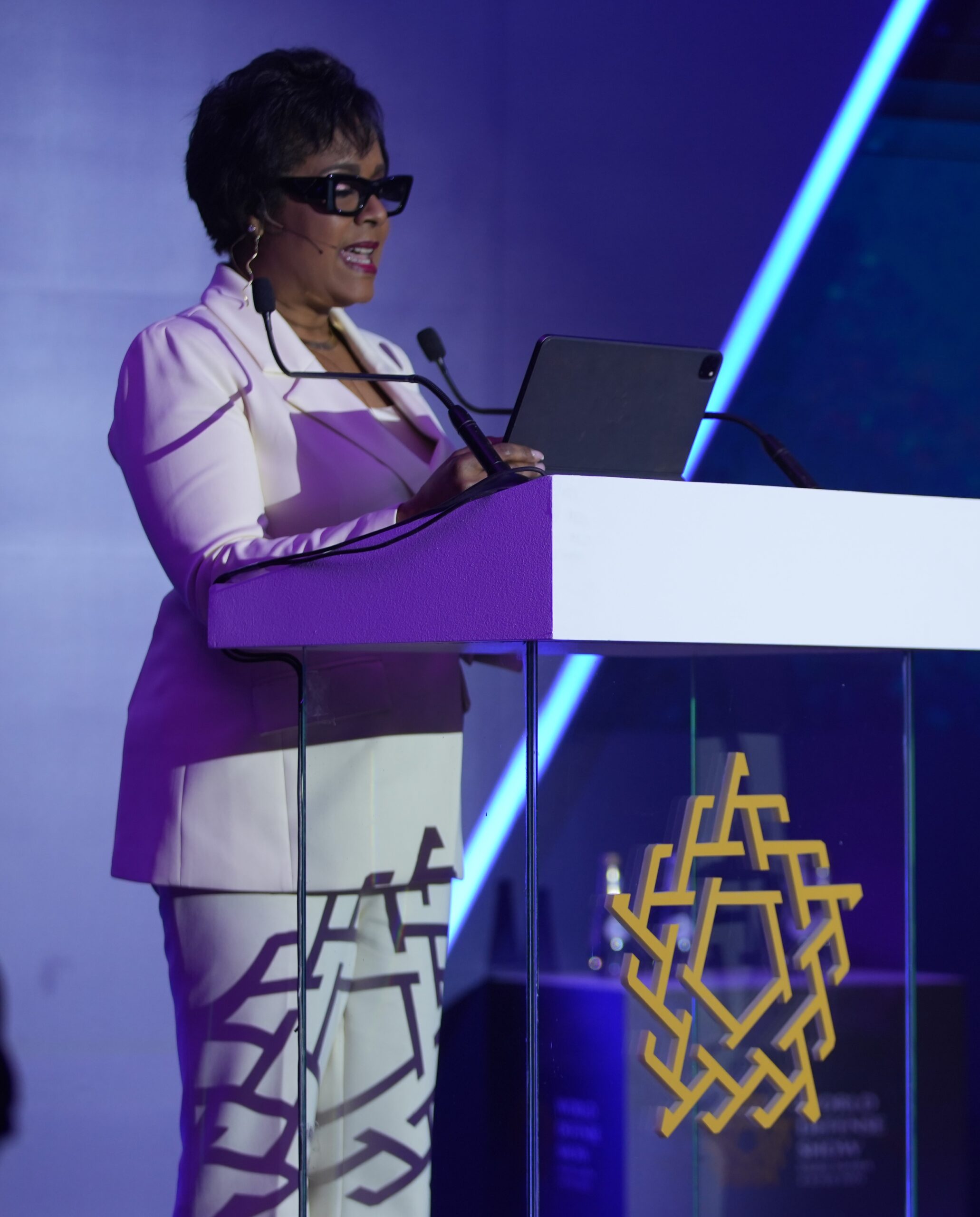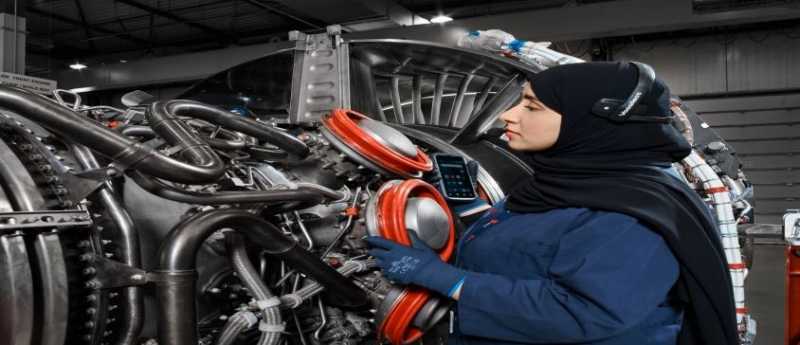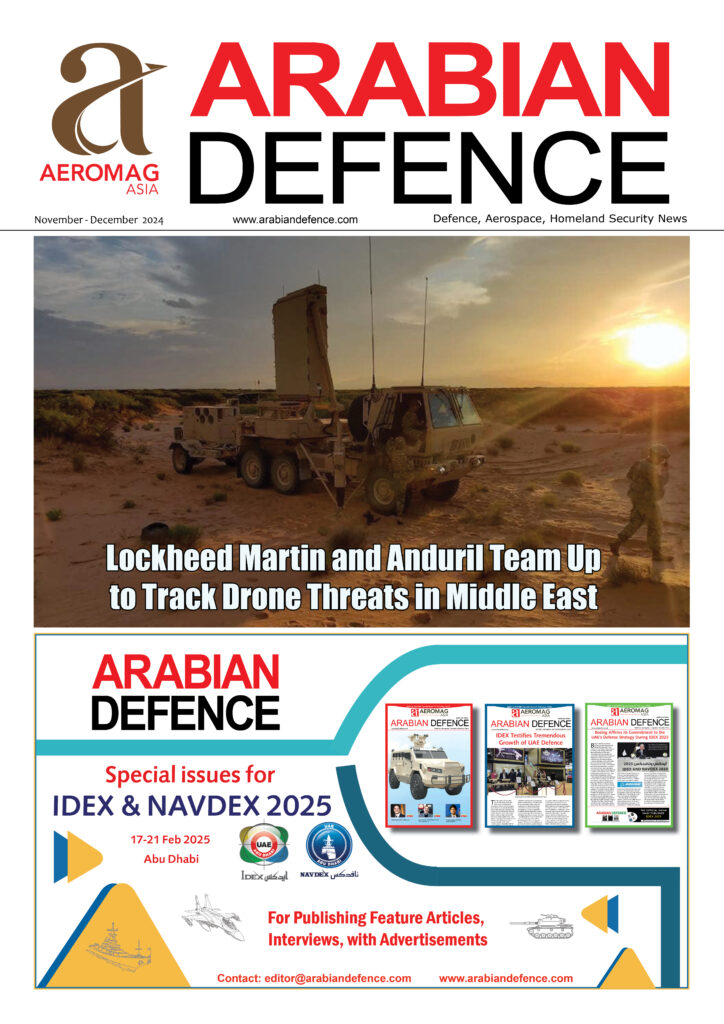
At World Defense Show 2024, Stephanie C. Hill, President of Rotary and Mission Systems at Lockheed Martin, articulated a vision for transforming the global aerospace and defense industry to meet the challenges of the 21st century security environment. She delivered her presentation to an elite audience of excellencies and defense industry experts during the Future Defense Forum.
The aerospace and defense industry stands at a crossroads, transitioning between two eras. As the global security environment becomes increasingly complex, it signifies a crucial need to advance into the next era of innovation.
Stephanie C. Hill, President of Rotary and Mission Systems at Lockheed Martin, addressed the need for transformation during her keynote at World Defense Show 2024, presenting a vision for the future of the aerospace and defense enterprise and outlining a plan to progress into what Lockheed Martin coins as “21st Century Security.” She emphasized, “We must evolve to meet the realities of the 21st century security, technology, and talent landscapes.”
Nations around the world are grappling with the shifting nature of threats and rapid technological advancements that are reshaping defense strategies. Traditional reliance on military hardware no longer suffices in a world where digital power has become more prevalent, accessible, and affordable — increasing asymmetric threats. Moving forward, the integration of digital technologies into military platforms and systems has become a defining factor in the new era of global power competition.
The accelerating pace of dual-use technologies like artificial intelligence, wireless communications, and cloud computing are on one hand, enhancing economic prosperity and easing everyday life — from self-driving cars and intelligent voice assistants to ultra-fast wireless internet and autonomous robots. However, their military applications can stir significant risks within the global security environment, raising unconventional threats like expertise in cyber warfare and uncrewed aerial vehicles. These new challenges undermine nations’ ability to deter adversaries, shifting the power balance that has traditionally prevented major armed conflict. Hence, a pressing need for a comprehensive change in strategy and capabilities within the defense industry — to not just adapt, but stay ahead.
Evolving from Platform-Centric to Network-Centric
Calling for a fundamental shift from platform-centric to network-centric solutions, Hill says, “Technological superiority in the 21st century will be determined by the ability of forces and allies to operate jointly across all domains: land, sea, space, air, and cyber.” The integration of military systems and platforms into a seamless network will enable multi-domain operations, creating a force-multiplier effect.
Lockheed Martin’s Diamond Shield multi-domain management system is an example of comprehensive technology which provides military forces with a full view of incoming threats and the capabilities available to counter them. By leveraging artificial intelligence, the system can recommend the most operationally efficient and cost-effective solutions to counter threats. This network-centric approach ensures that military assets, regardless of manufacturer, can work together to provide a decisive advantage in modern defense operations.
Forge Industrial Partnerships
Partnerships across commercial and international boundaries are essential. In today’s defense landscape, the most transformative innovations are coming from the commercial tech sector.
Companies like Verizon, Microsoft, Intel, and IBM are leading the charge in technologies such as AI, 5G, and cloud computing, critical softwares for enabling multi-domain operations.
Lockheed Martin’s collaboration with these commercial giants serves as a prime example of how partnerships can enable the defense industry to stay ahead of technological advancements. “Partnerships in the aerospace and defense enterprise of the future must cross not only commercial boundaries but also international ones,” Hill iterated. Partnerships with high-tech companies will drive development of technologies that can enhance the defense capabilities of nations worldwide, providing them with the necessary tools to meet the unique challenges of today’s threat environment.
Build a Robust Talent Pipeline
While addressing the complex threat environment is a core focus area, the industry must make a stronger contribution to domestic job creation and economic growth, a concern of all nations across the board. Cultivating a robust pipeline of world-class, diverse talent is of vital importance. As a woman of color who began her career as an engineer, Hill stressed the importance of attracting young innovators, especially from underrepresented communities. Focusing on diversity is about more than equality — it strengthens the industry with talent that holistically represents the next generation.
Partnerships between industry stakeholders and educational institutions are crucial to talent development efforts of the entire industry, as they foster the next generation of defense innovators and ensure the industry is equipped with the best talent to tackle future challenges. As Hill pointed out, “Attracting and retaining the talent we need isn’t just a business imperative, it’s also a matter of global security.”
Recognizing the importance of cultivating future talent, World Defense Show incorporated The Future Talent program, aligning with Saudi Arabia’s Vision 2030. This initiative opens the event to the next generation of defense industry leaders, offering interactive mentoring sessions and guidance on future career opportunities in defense.
How Saudi Arabia Sets the Bar
Saudi Arabia’s Vision 2030 provides an inspiring model for other nations looking to strengthen their defense industries while fostering economic growth and innovation. Throughout her presentation, Hill remarked on how Vision 2030 is reshaping the Kingdom’s future across all sectors, setting a global example for embracing a new era of innovation.
Recognizing that a robust aerospace and defense industry is foundational to the success of Vision 2030, Saudi Arabia has placed a strategic emphasis on localizing 50% of military expenditures. This move boosts the Kingdom’s defense capacity and contributes to the manufacturing renaissance, creating high-tech jobs that define a diversified economy.
The 2030 vision has opened doors for meaningful partnerships with global defense leaders like Lockheed Martin. A partnership that has cultivated collaboration on future vertical lift technologies, such as Sikorsky’s X2 rotorcraft — a game-changer in both national defense and international partnerships. Highlighting the partnership Hill mentioned, “Saudi Arabia’s growing leadership in the aerospace and defense sector provides a solid foundation for us to partner and innovate on technologies that will shape the future of global security.”
The Lockheed Martin Saudi Arabia Internship Program and growing partnerships between educational institutions and industry stakeholders are nurturing the next generation of Saudi innovators in defense.
Driving Momentum Toward the Future
As the aerospace and defense industry faces unprecedented challenges, the charge into the next era will require adaptability, collaboration, and innovation. Lockheed Martin’s vision for 21st-century security as laid out by Stephanie C. Hill, offers a blueprint for success.
Hill concluded, “With the passion and commitment of the thought leaders in this room from like-minded nations around the world, I know we will transform into a global defense enterprise where multi-domain operations give our partners the technological advantage they need to deter aggression and preserve peace.”
World Defense Show 2024 reaffirmed its status as a leading forum for collaboration, discussion, and innovation within the defense sector. Insights shared by industry leaders like Stephanie C. Hill are helping to drive momentum toward a future where multi-domain operations, cutting-edge technologies, and a new generation of talent will define the global defense landscape. As the conversations sparked at WDS 2024 continue to evolve, the 2026 edition promises to further elevate these discussions, addressing critical issues and shaping the future of the defense industry.






